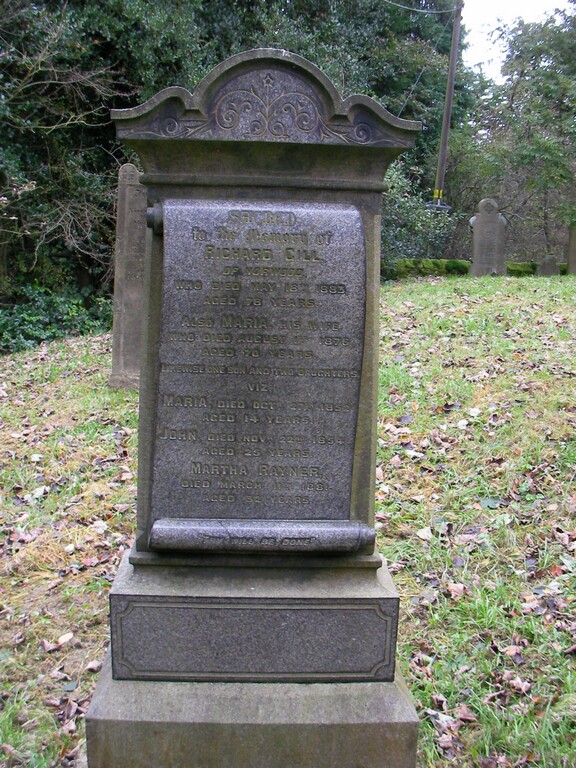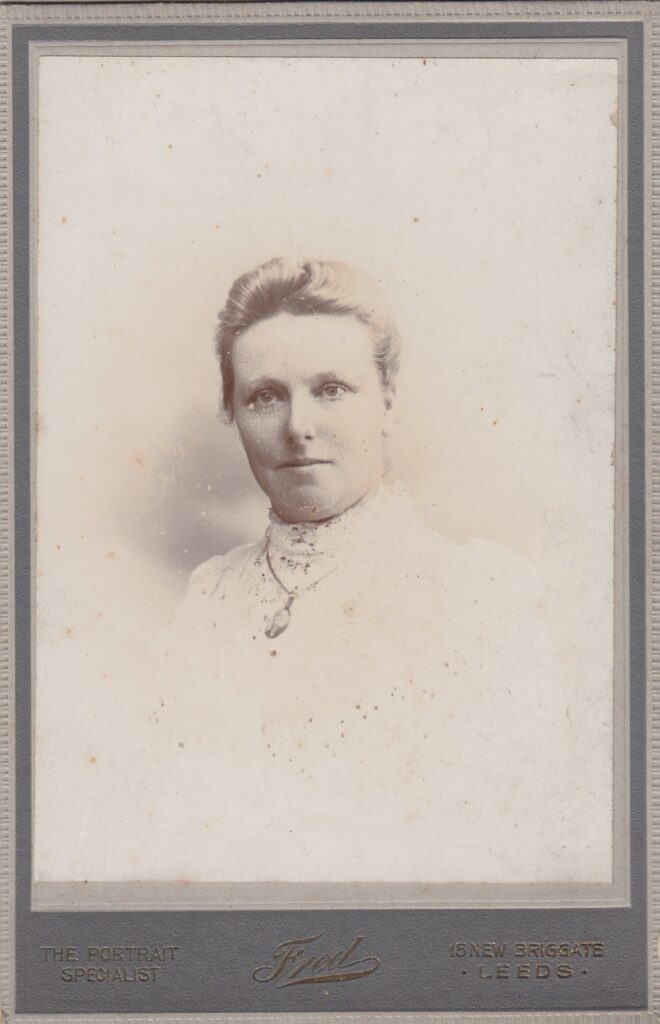
I inherited the beautiful leather-bound album from my Grandma, Mary Houseman. She is turn had inherited it from her mother, Hilda Mary Scott. Beyond that, I knew almost nothing of the pictures within. How old was it? Who had put it together? Who were the photos of? Whilst the clasp itself was broken, the people inside were strangers, their connection to our family locked away, with the key lost forever.
There was one exception. Thanks to the apparent beauty of a small child, captured by a travelling photographer and subsequently enlarged, followed a few short years later by the same child’s tragic death, I could identify one person with absolute certainty. Walter Scott was to be the key. Walter was Hilda Mary’s brother and that meant that the album likely belonged to either Maria Reynard, Hilda Mary & Walter Scott’s mother or her mother Mary Ann Gill.
What better thing for someone living alone in lockdown 1.0 than to work away at that lock? I carefully extracted and scanned the photos, scribbled down possible family trees, studied the later pictures of Hilda Mary’s siblings, aunts, uncles & cousins and dived into the world of Victorian photography. Some ideas emerged, I started making educated guesses but was uncertain and didn’t feel I was really doing the album justice.
Then up popped professional dress historian, portrait specialist and photo detective Jayne Shrimpton on Who Do You Think You Are? and I realised it was time to turn to an expert. It took a few more months but finally I was sitting in Jane’s beautiful Lewes garden on a hot, sunny July day slowly unlocking the album’s secrets. Who knew that leg-o-mutton sleeves could date a photo to within three years? Or that a red line around a photo meant it was twenty years older than others on the same page? Several “educated guesses” proved to be out by a decade or two but my earlier research combined perfectly with Jayne’s dress expertise to put many names to faces.
Now, finally, Maria’s album can be unlocked and shared without doubts. The album opens with her husband John Scott likely with his father Charles not long before Charles died. Next are two portraits of Maria aged 21 and 40. Turning the page we see Maria & John’s infant children possibly including the only photo of a son, Charles, who died just three years old, followed by Maria’s siblings and their partners. And so it continues.
There is still a lot more work to do to identify all the people in this album and whilst it’s likely there will always be gaps, I am hopeful that by sharing this story others may spot their ancestors.
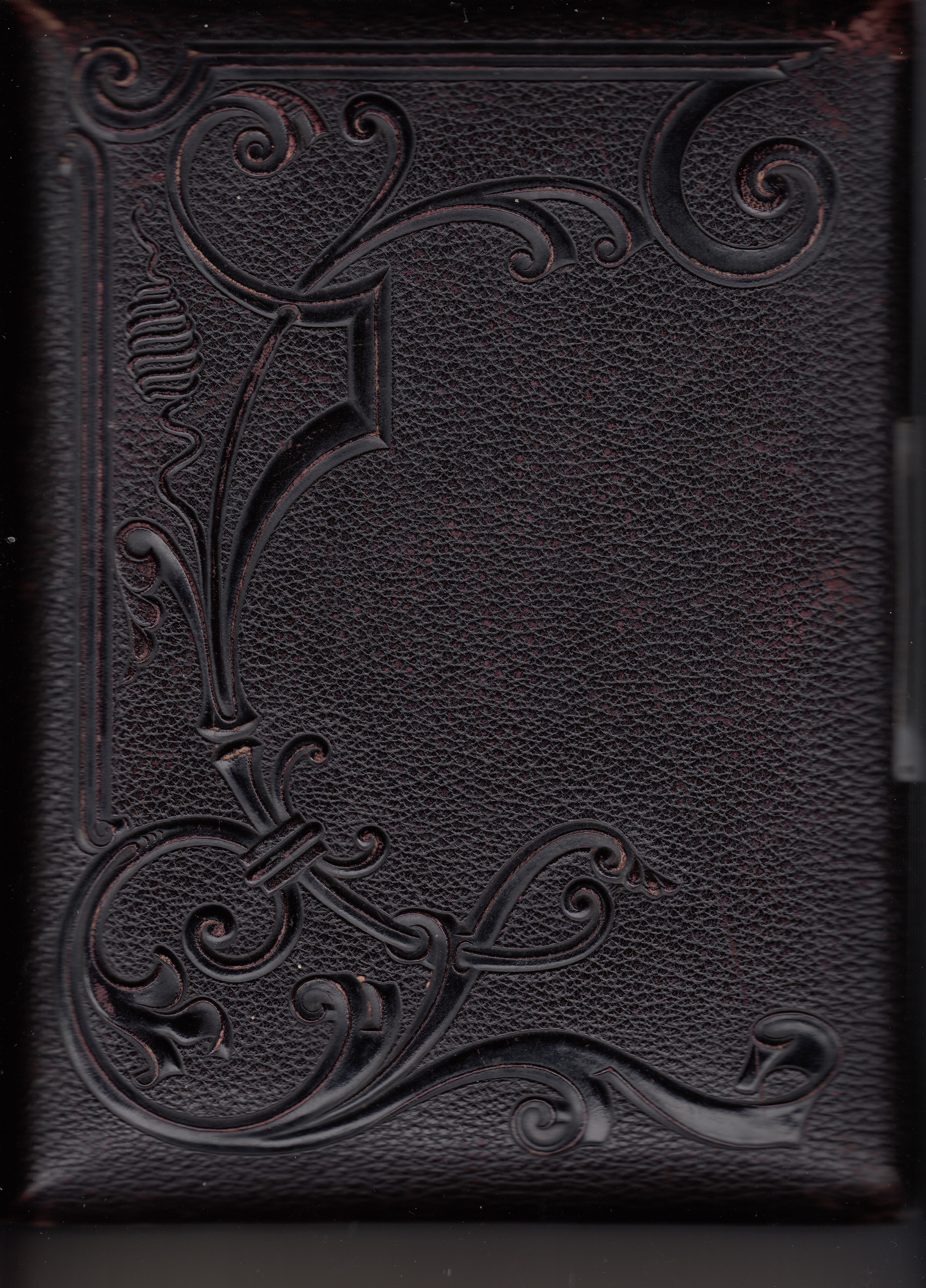

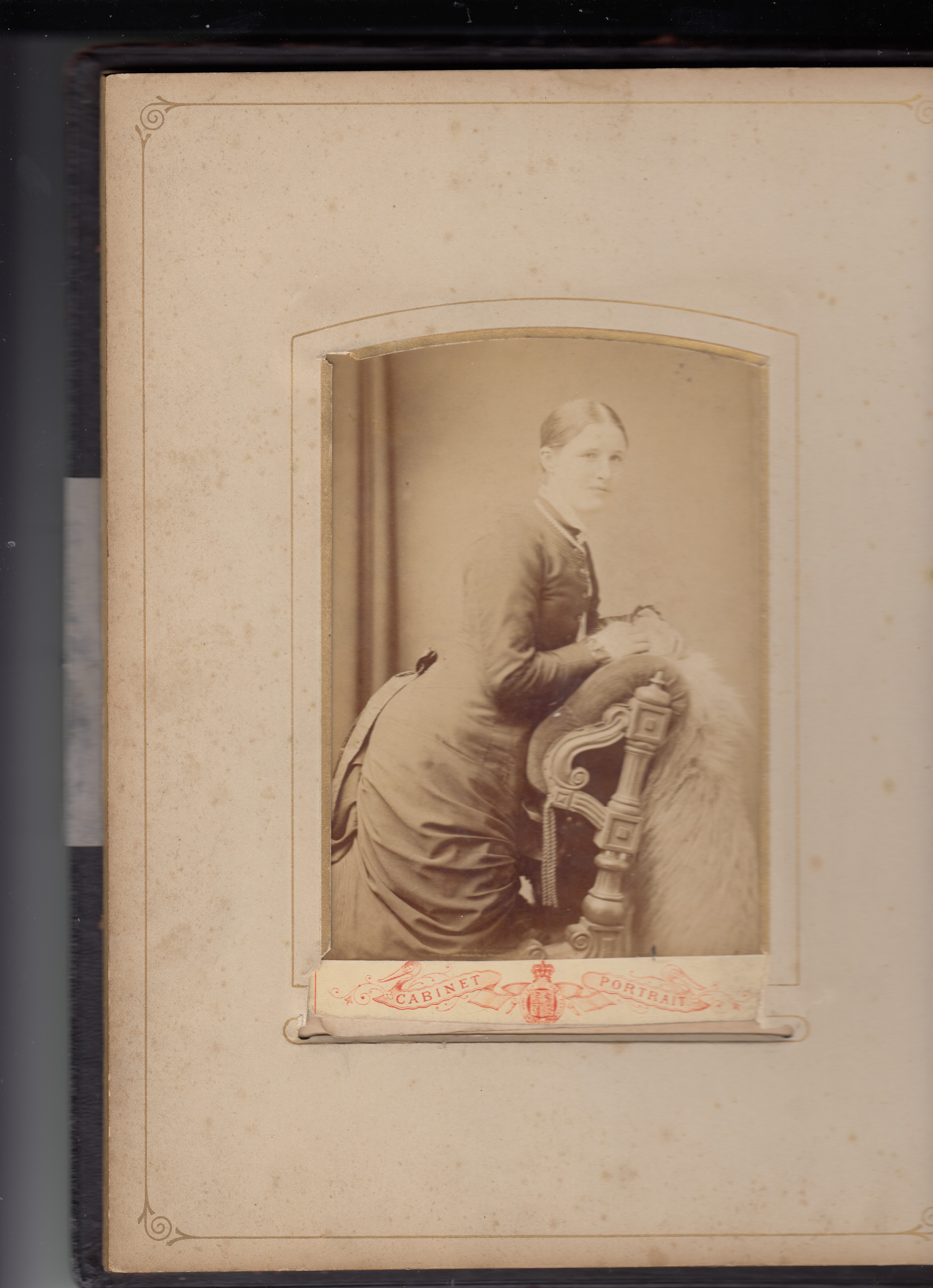

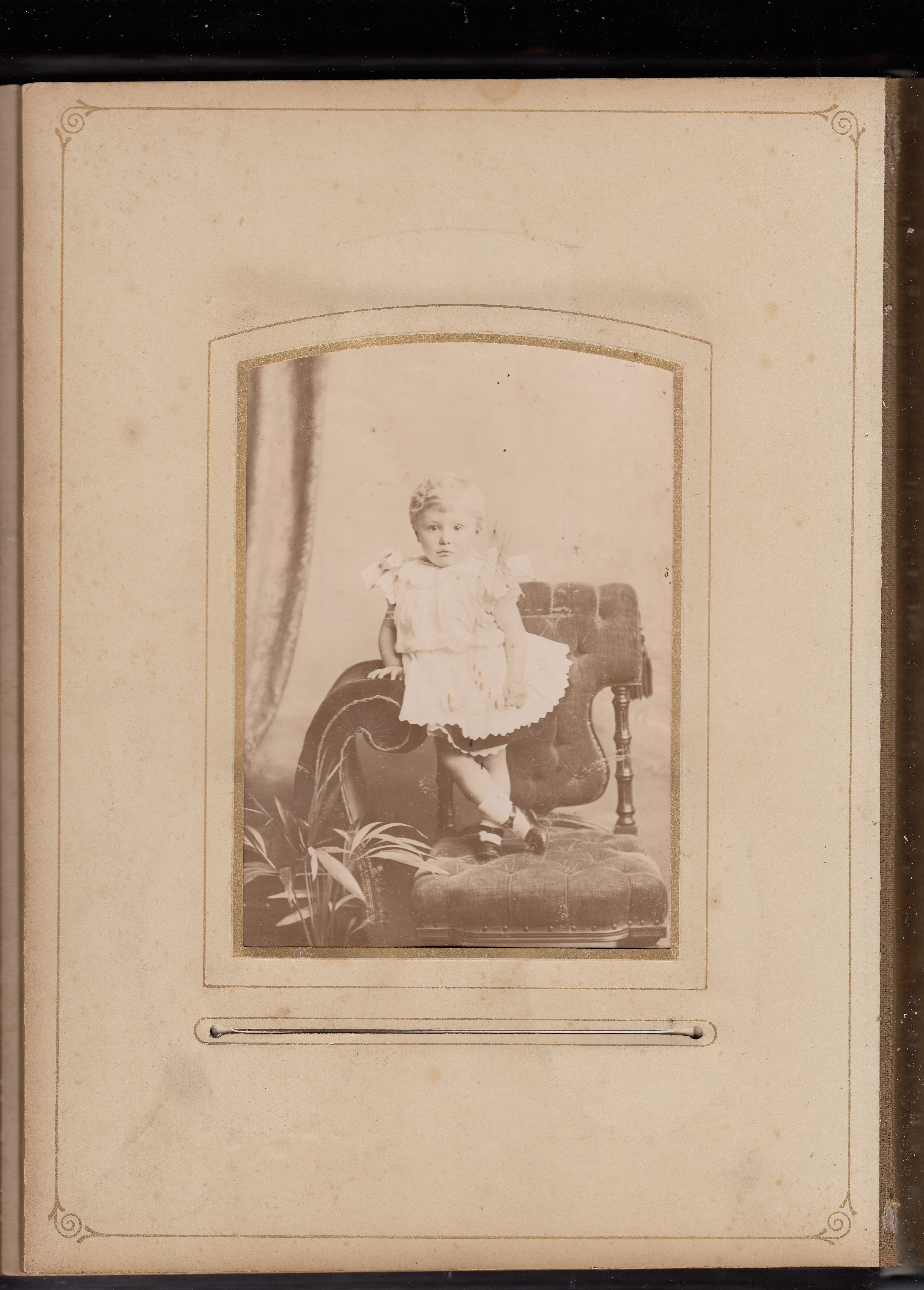
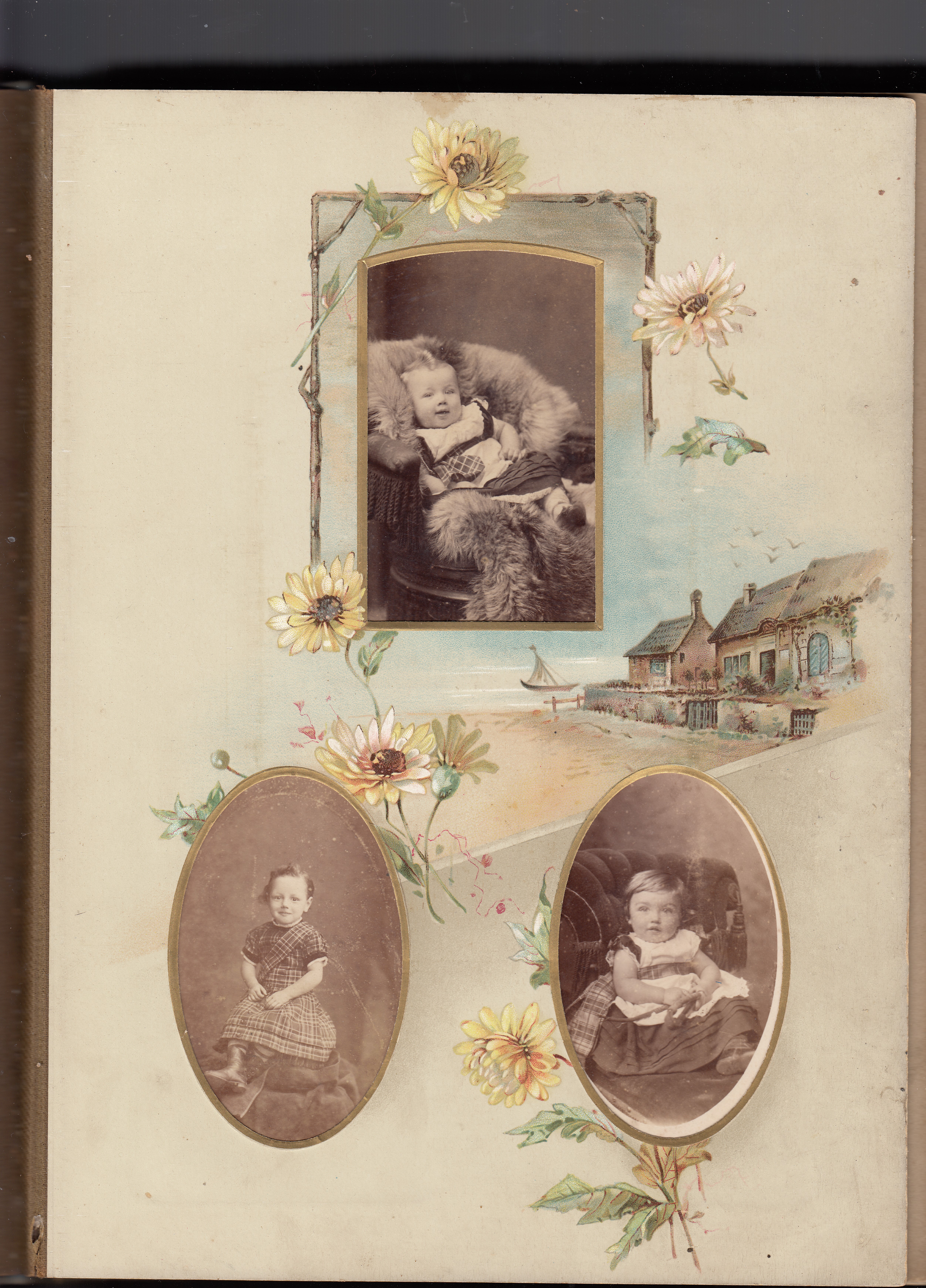
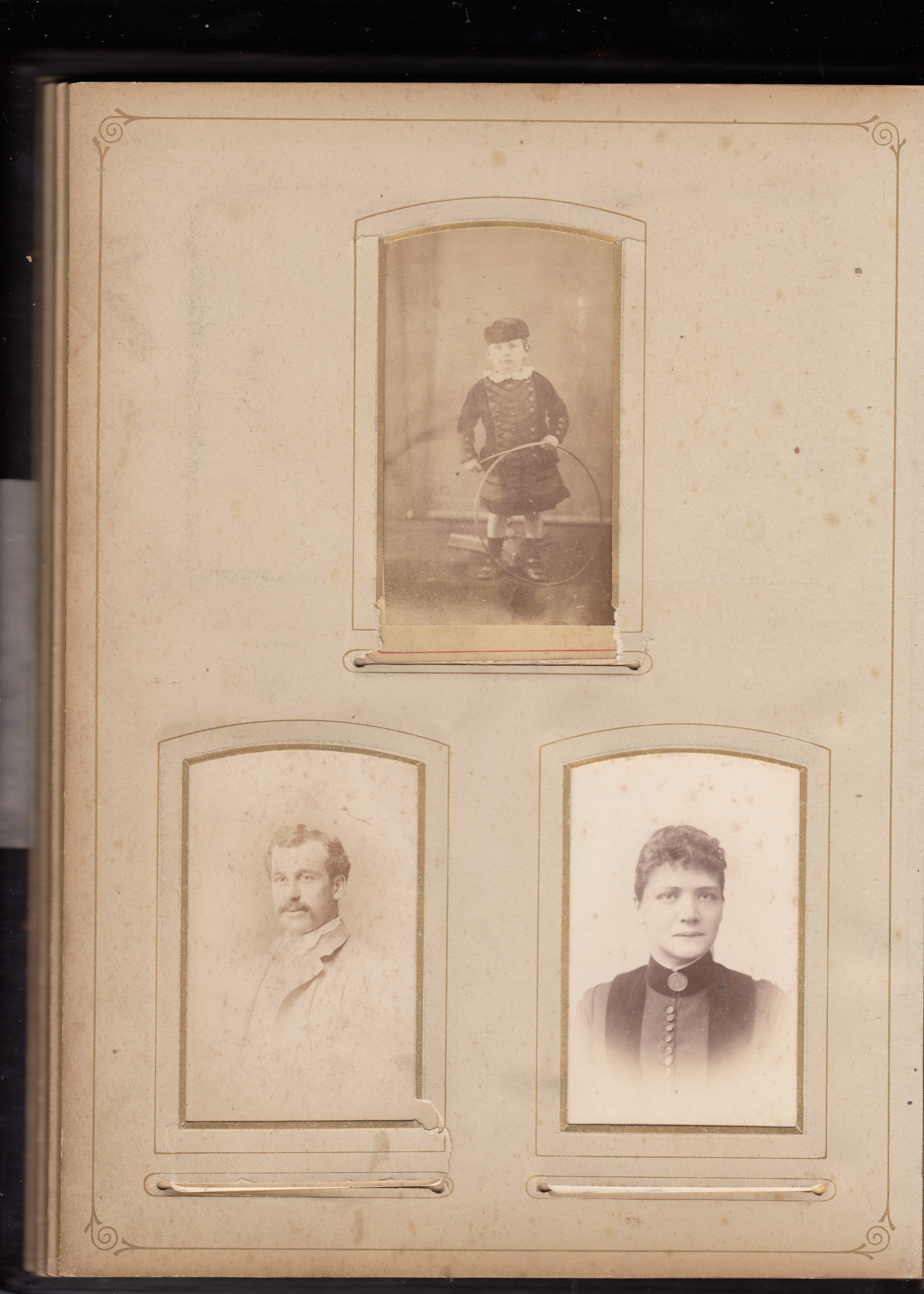


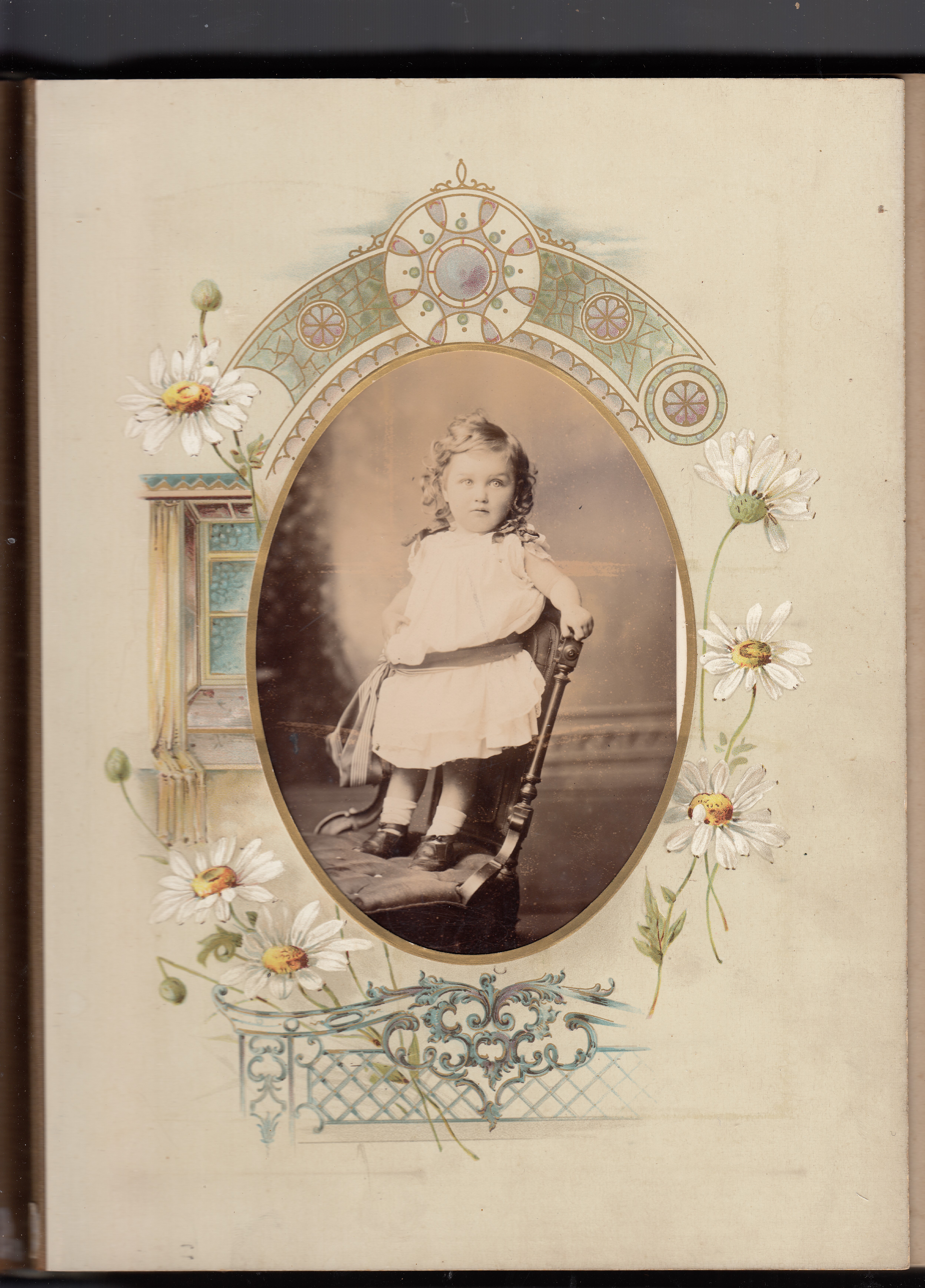
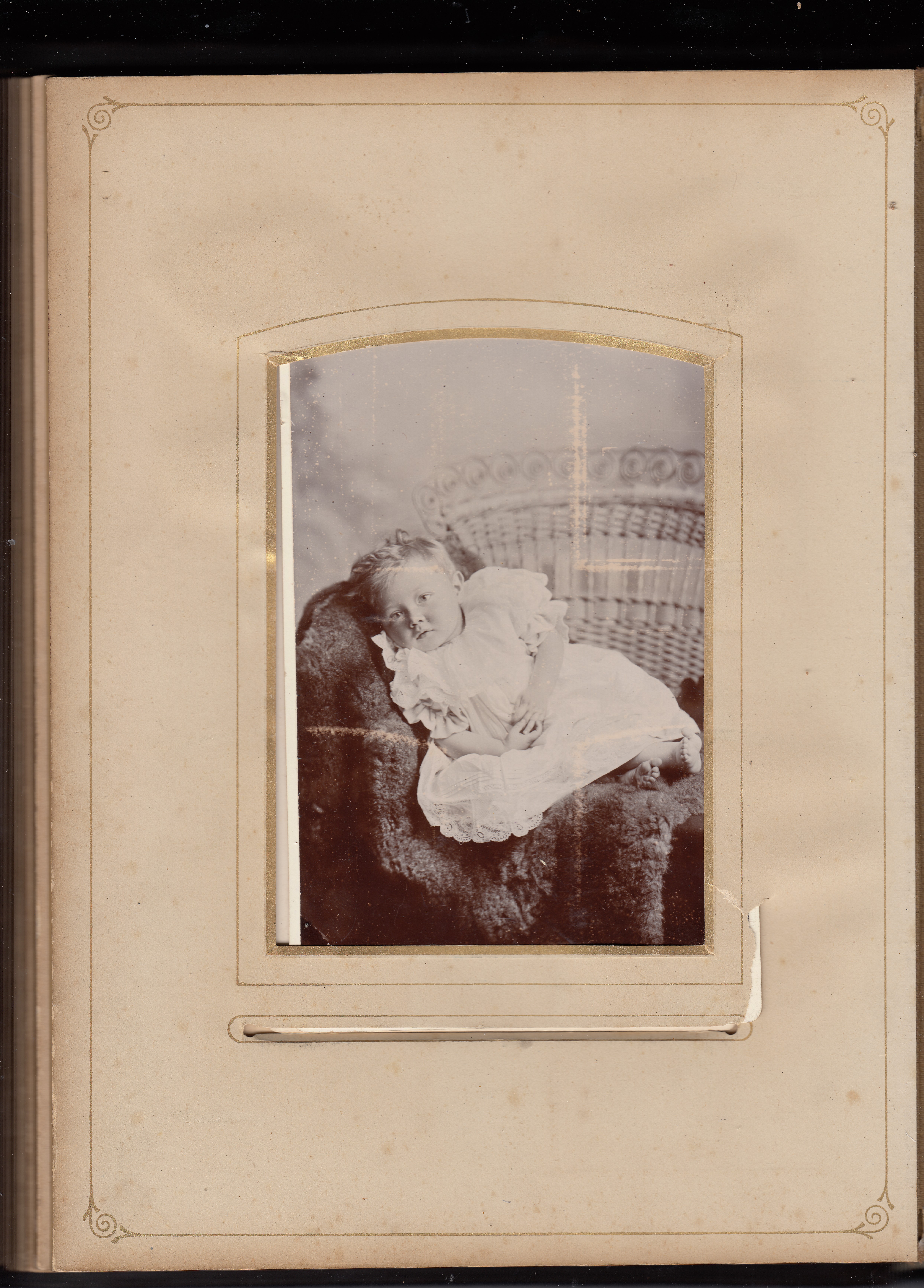
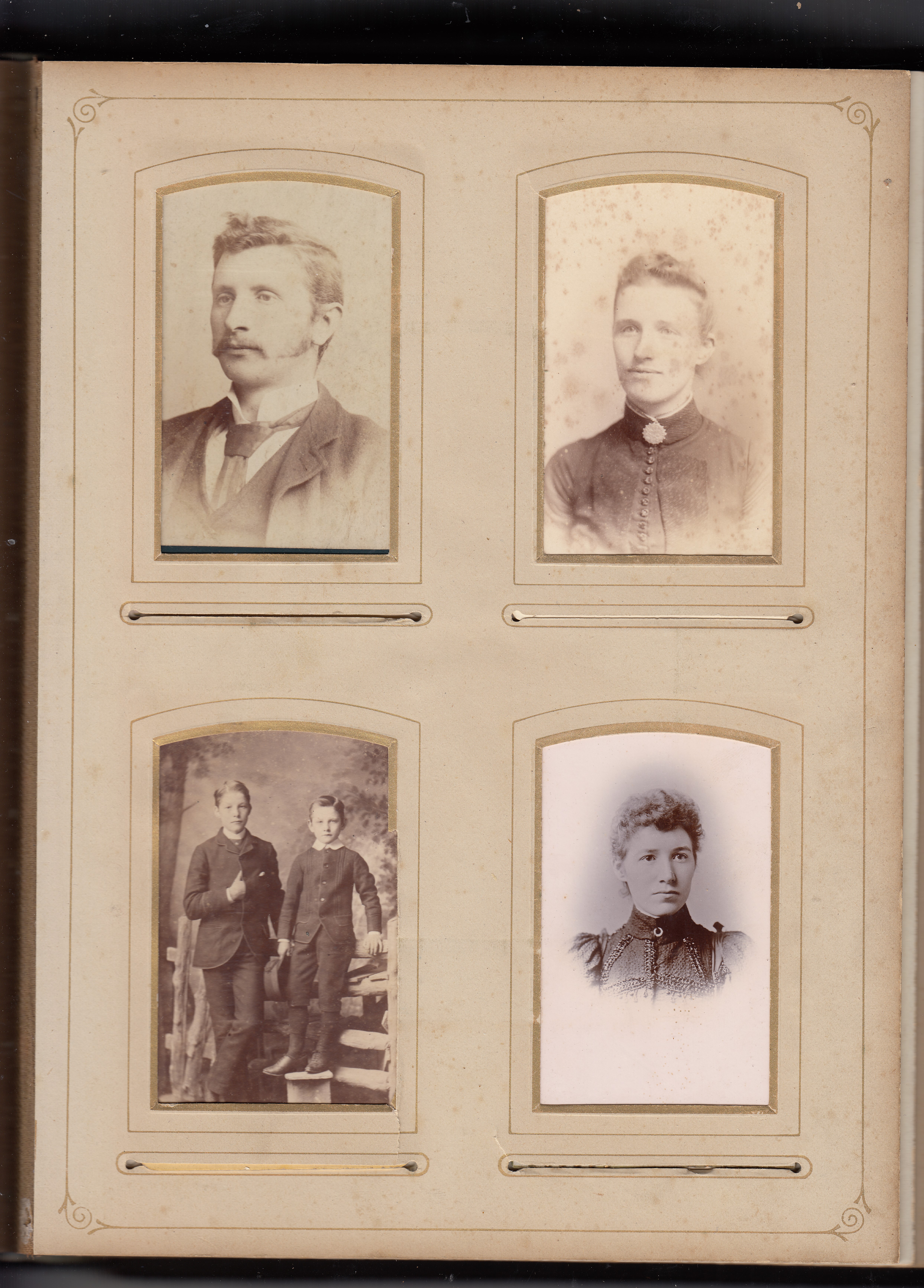
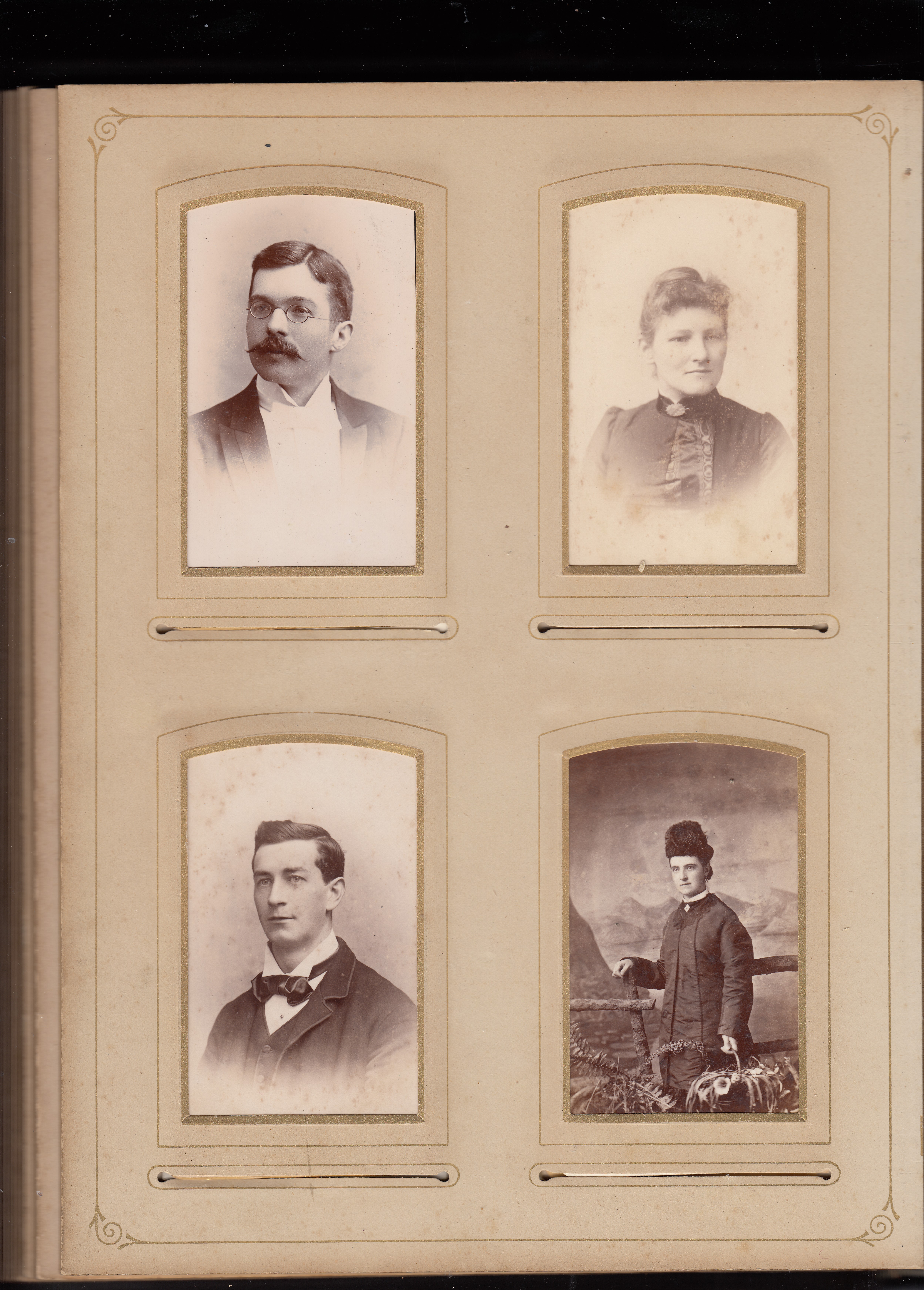
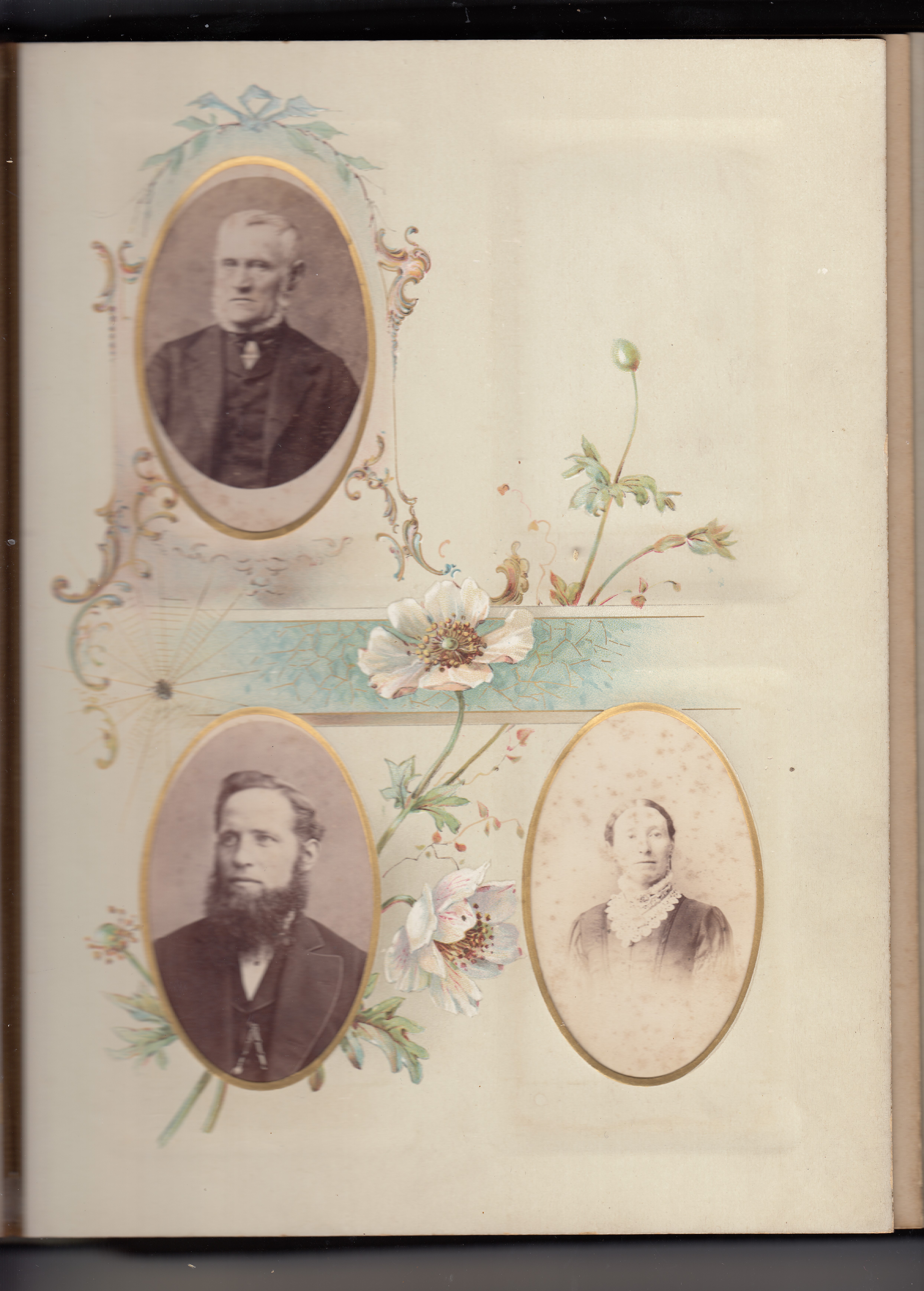



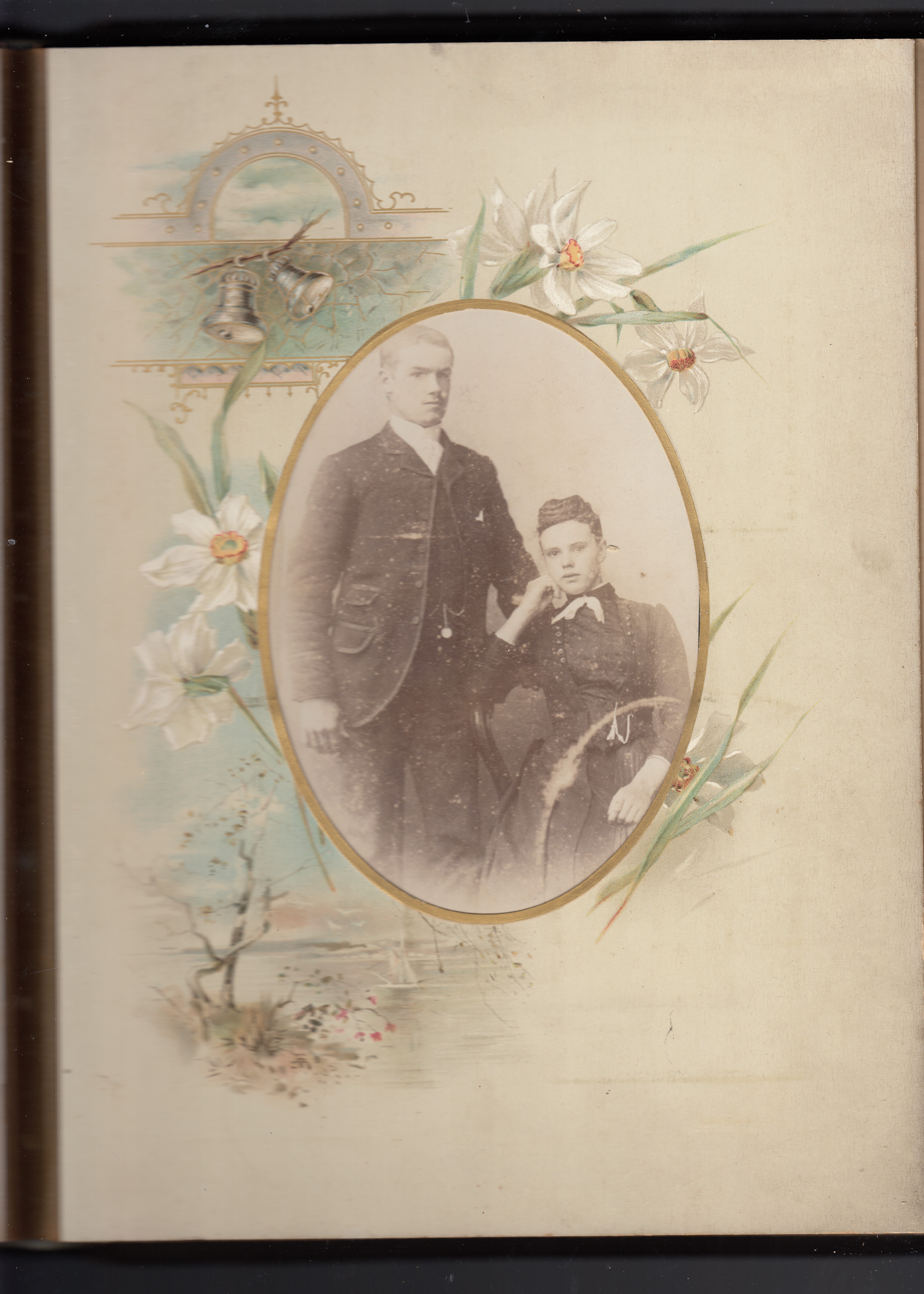
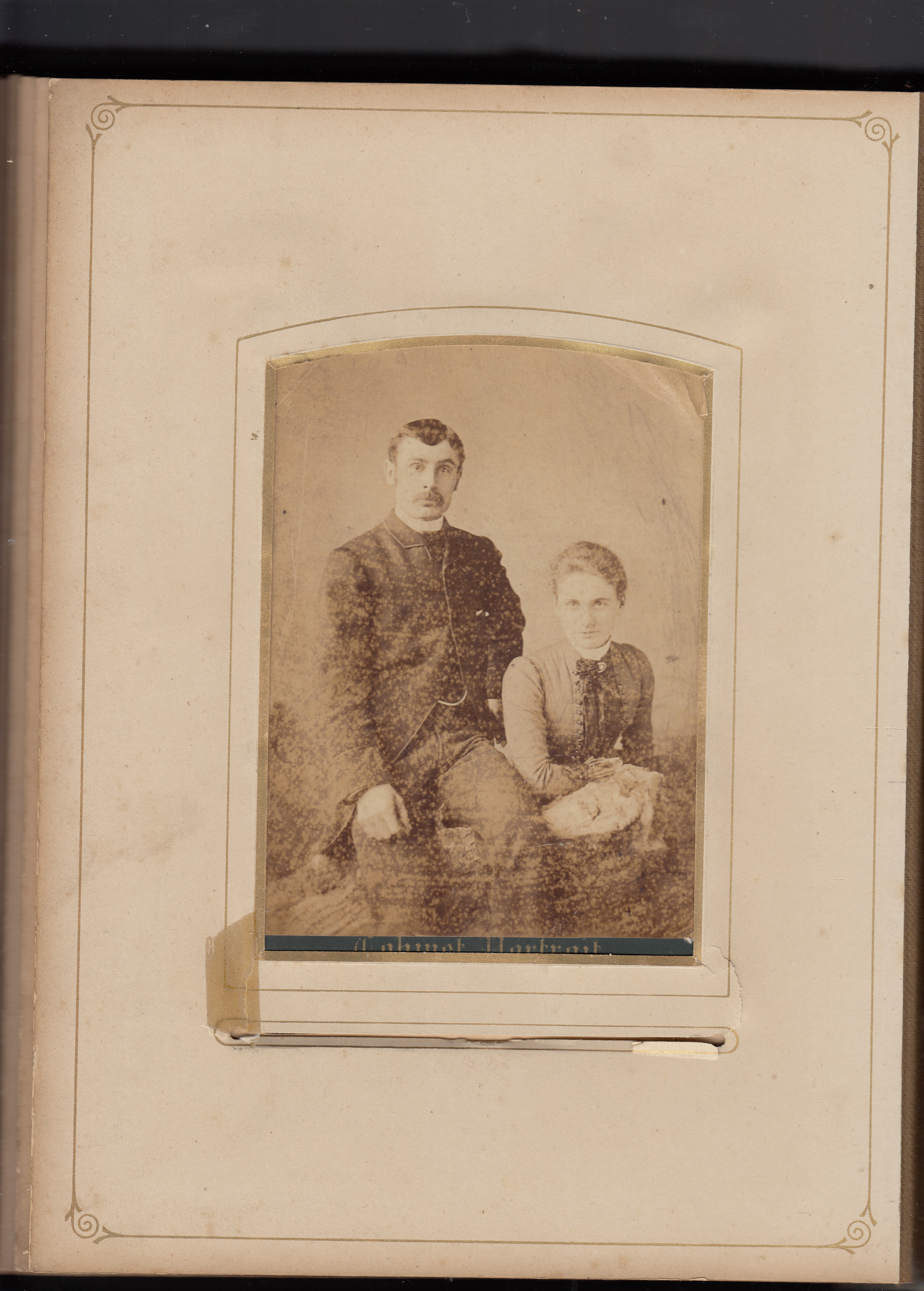
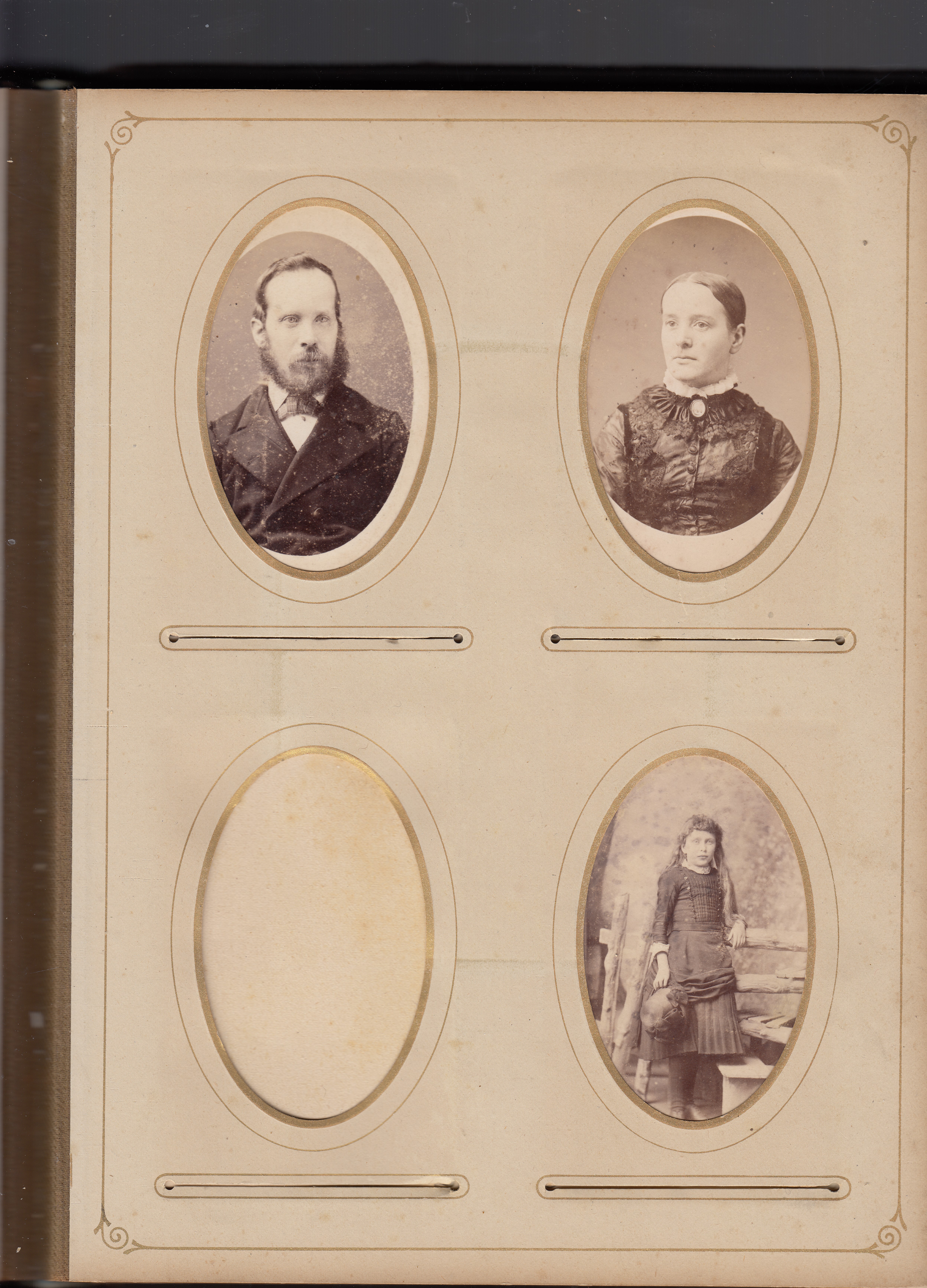
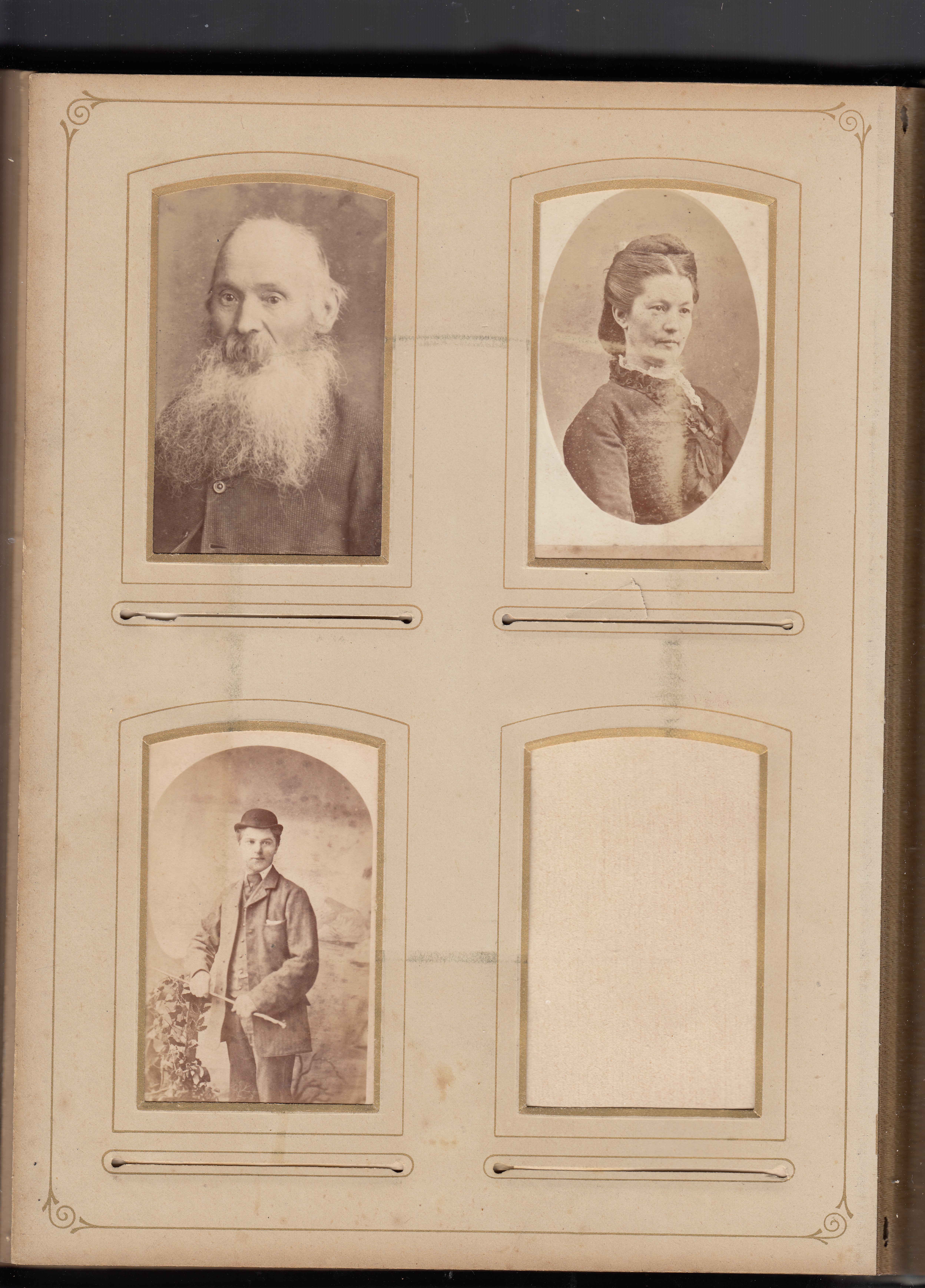
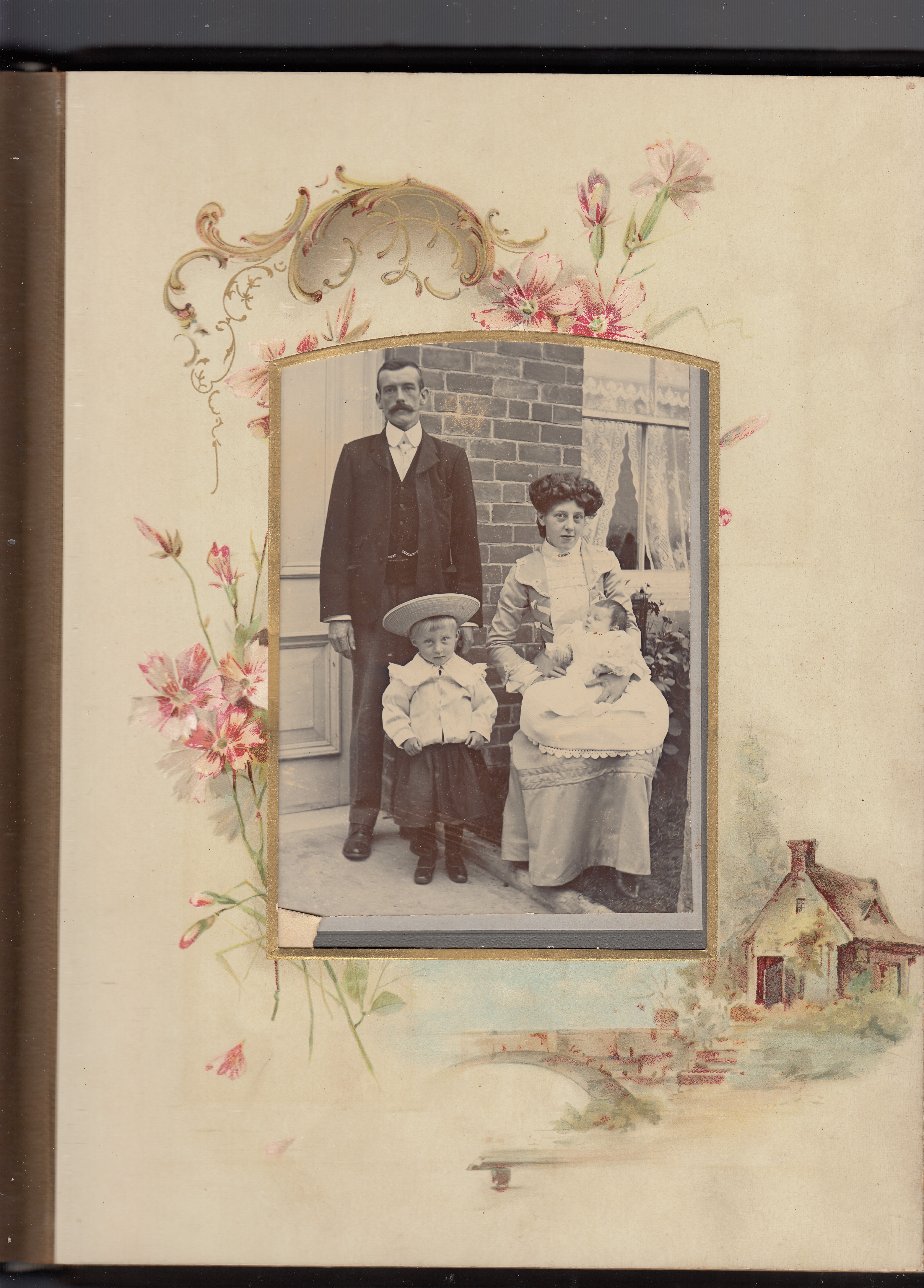

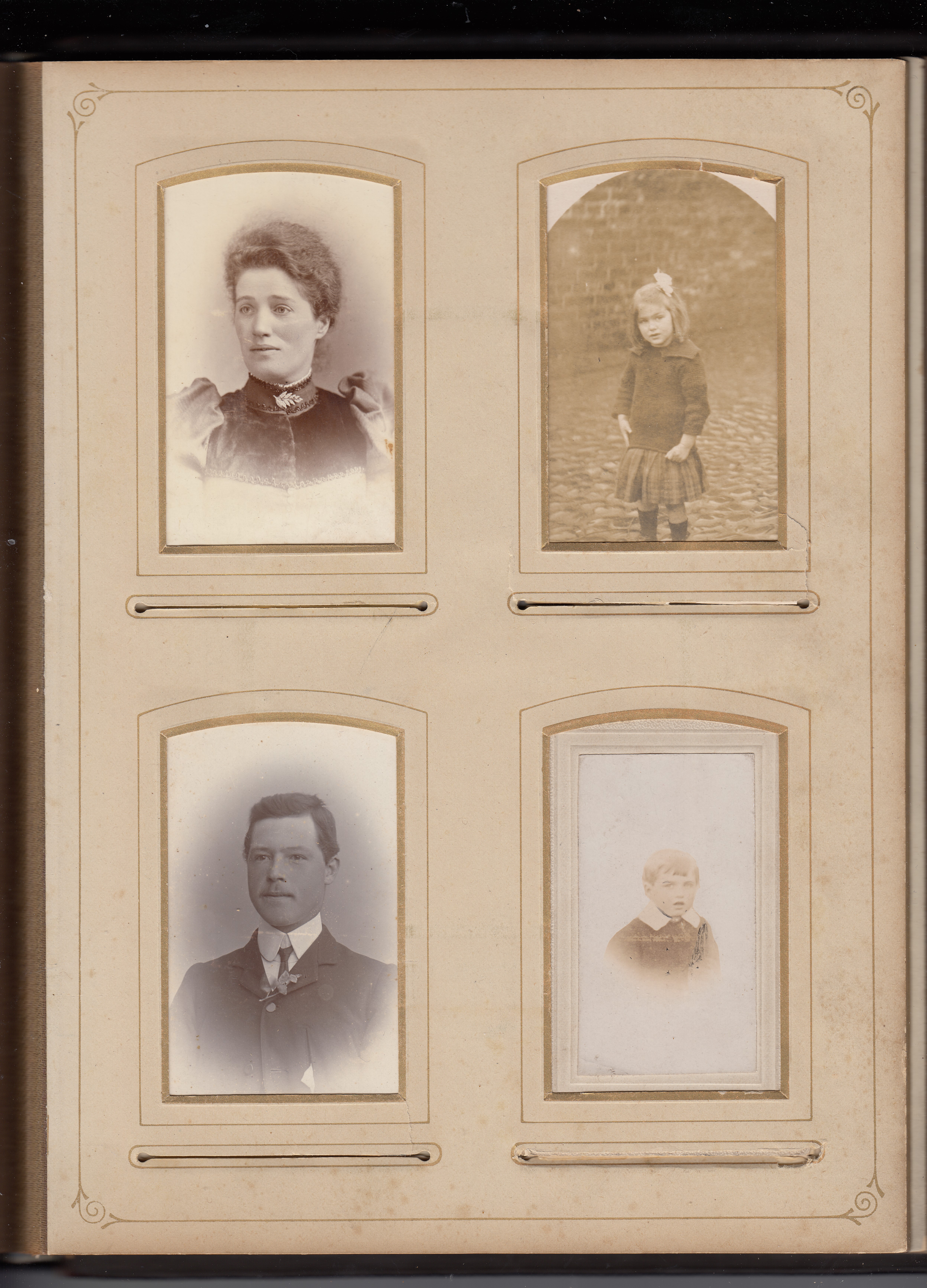
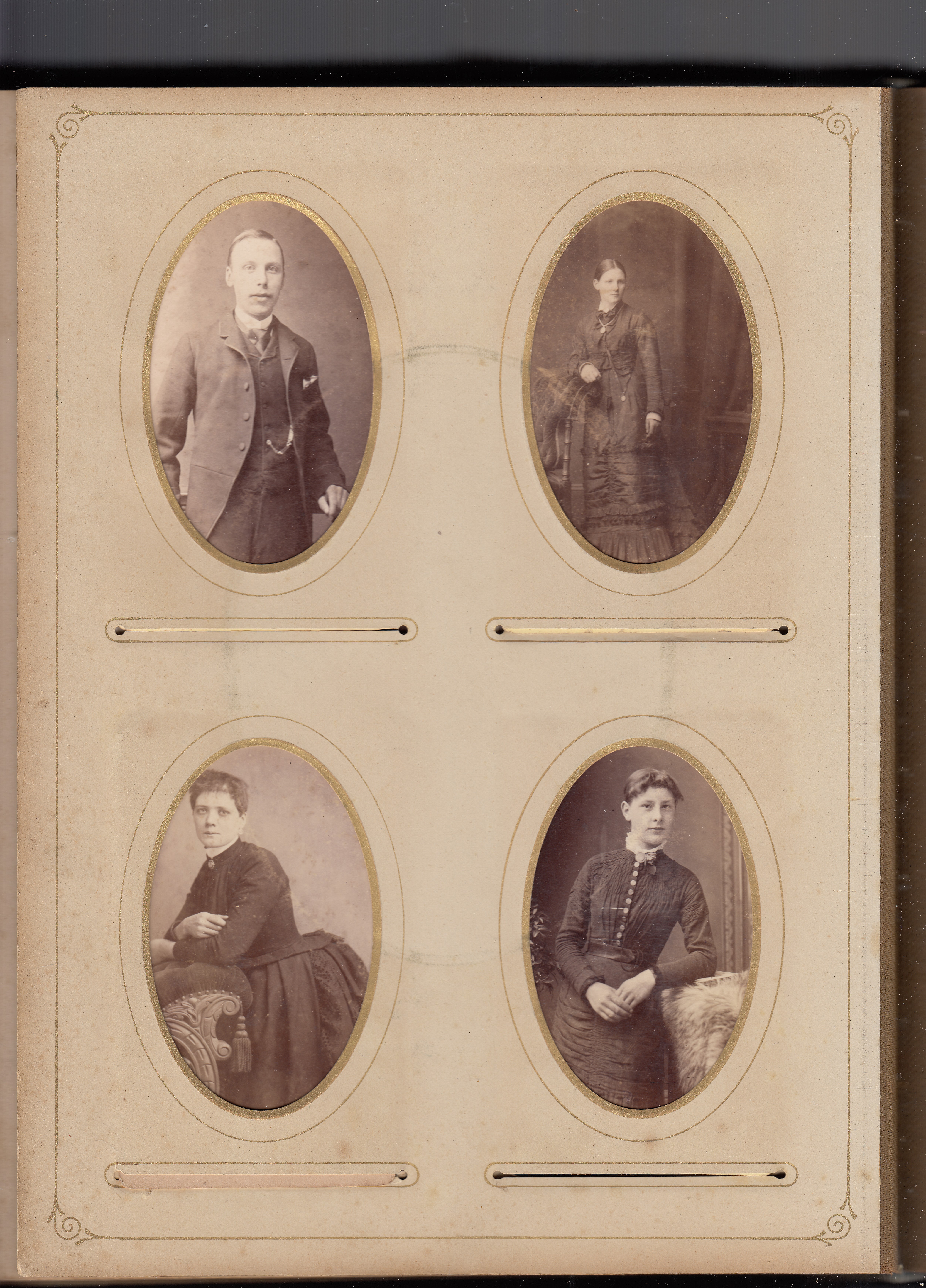
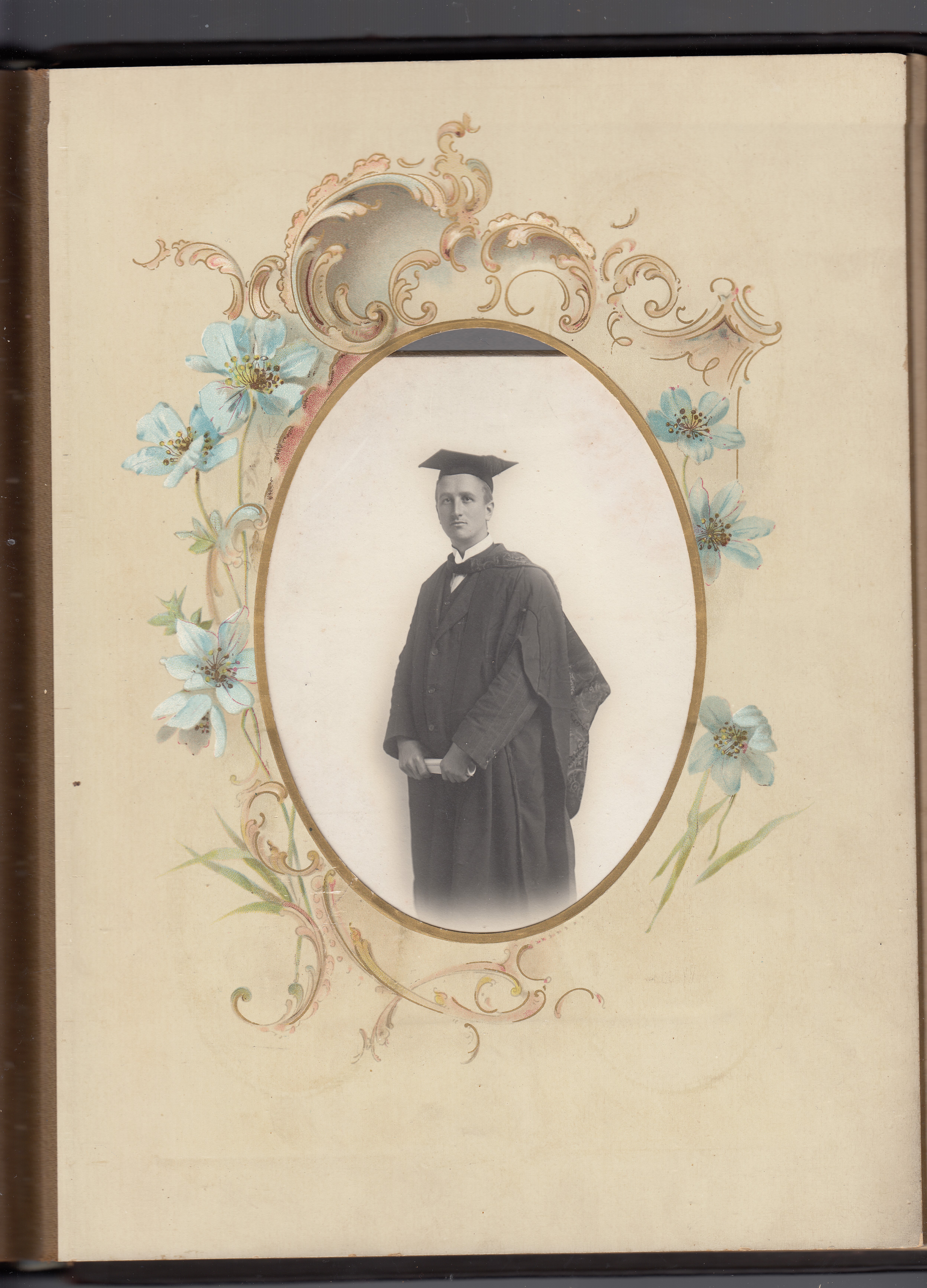
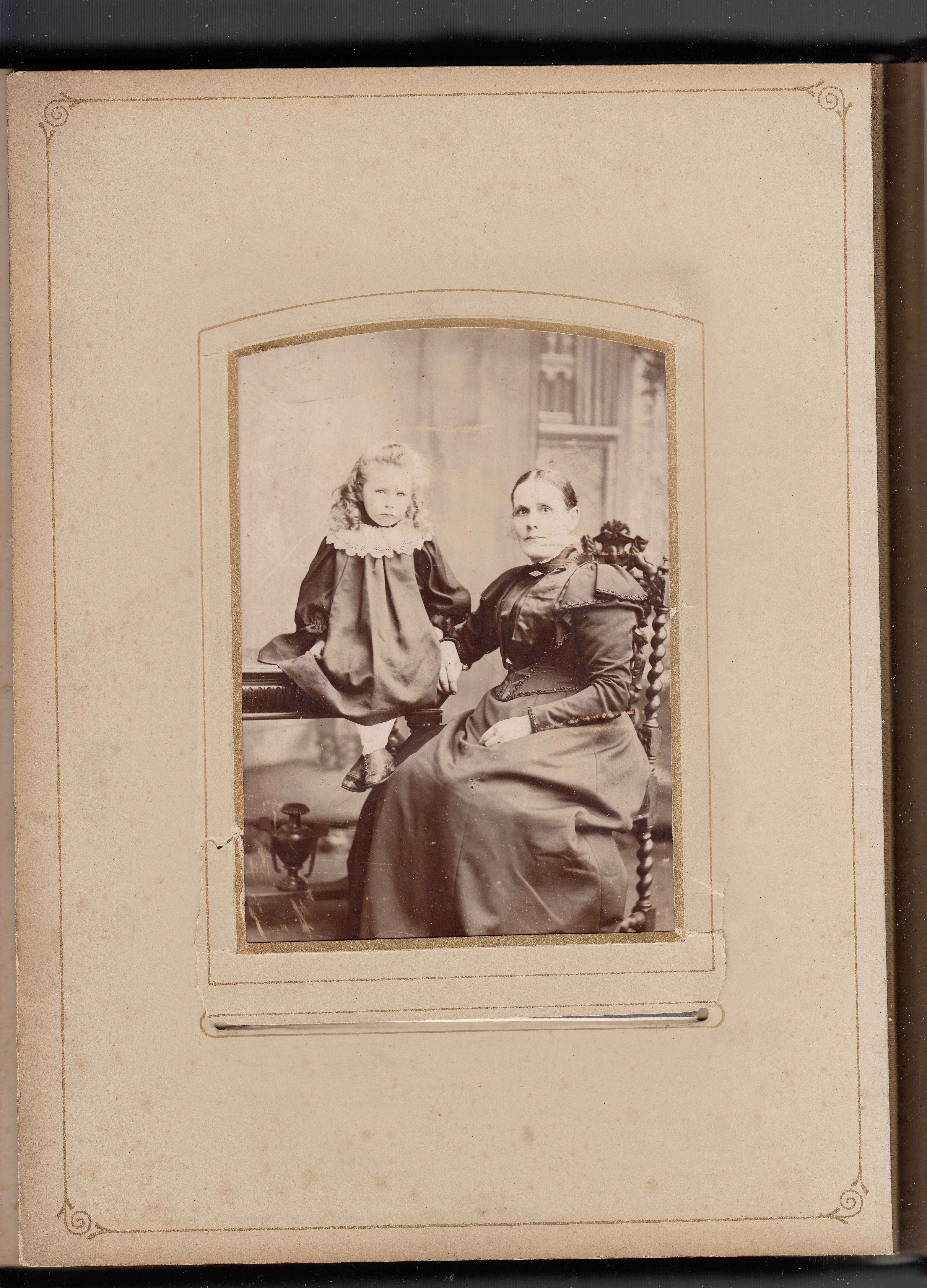
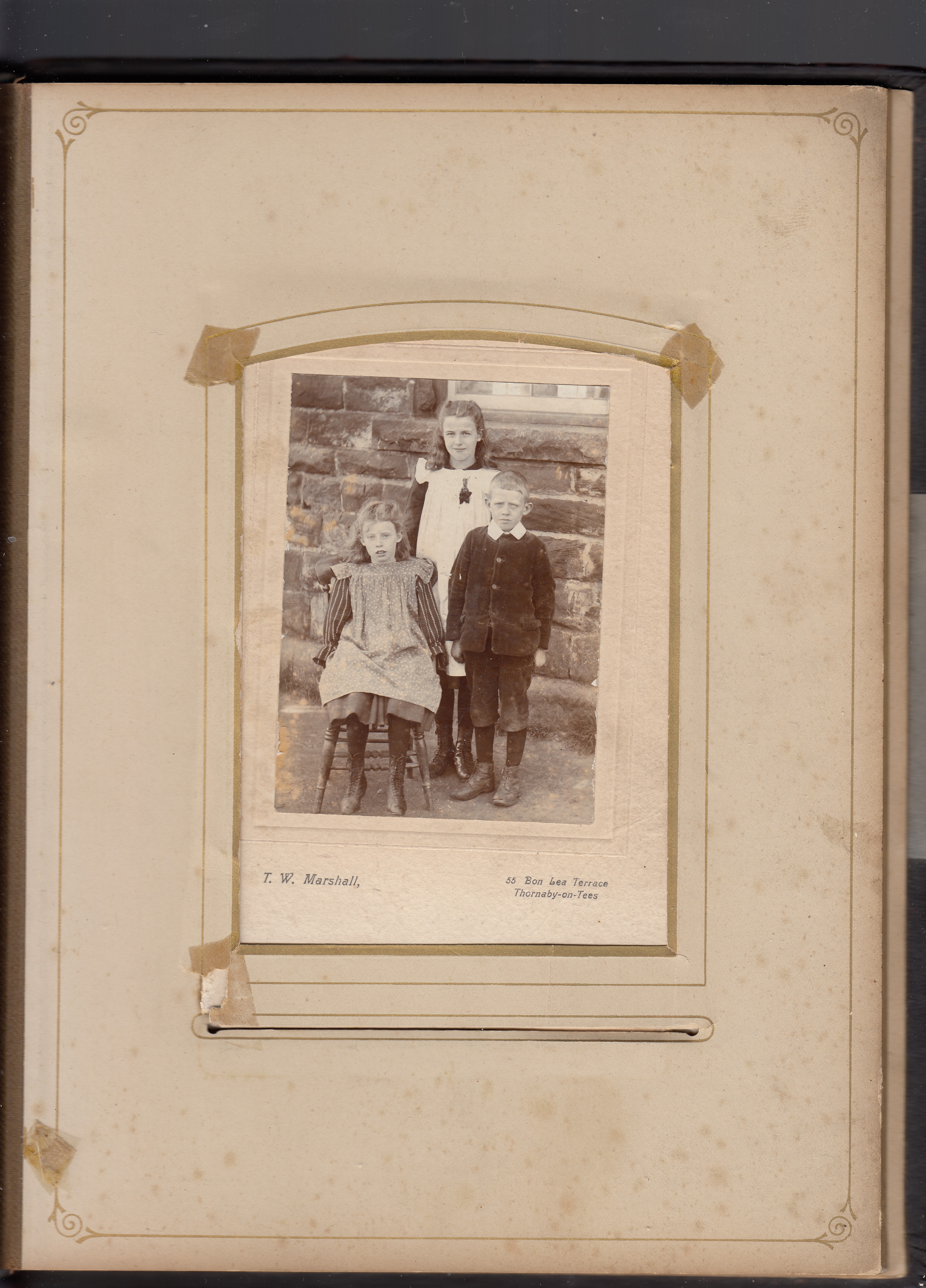


Maria was born in Ellerbeck on 16 December 1861 the second child of Mary Ann Gill & William Reynard. The Reynard family moved to Topcliffe when Maria was about five. Maria married John Scott, the son of Elizabeth Webster & Charles Scott, in 1885. The Gill family were from Norwood, the Reynards from Hampsthwaite, the Websters from Boroughbridge and the Scotts from Minskip. Maria & John had eight children. Two sons died as children leaving just William Richard (b. 1889) to carry on the Scott name. Hilda Mary (b. 1891) (my great grandmother) married Jesse Houseman, Laura (b. 1895) married John Taylor Houseman (Jesse’s nephew), Gertrude (b. 1899) married William Clarke, Clarice (b. 1900) married Malcolm Pennock and Marjorie (b. 1906) married Harold Millington Shutes. If this album was a wedding gift, I am sure it won’t have been the only one.
With much gratitude to my great, great grandmother, Maria Reynard, for creating this album, to Hilda Mary Scott & Mary Houseman for keeping it safe and to Jayne Shrimpton for helping me unlock its contents!


